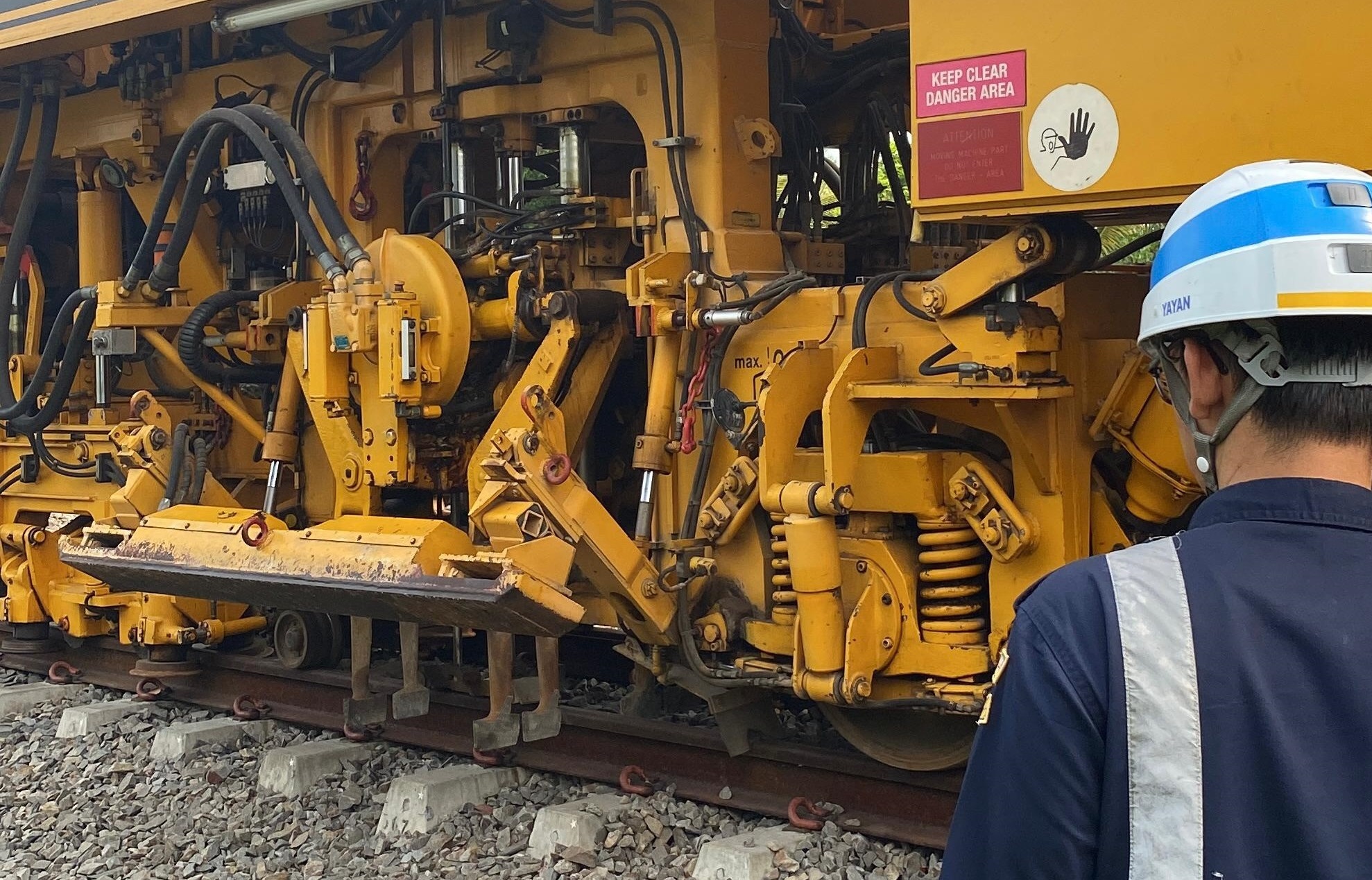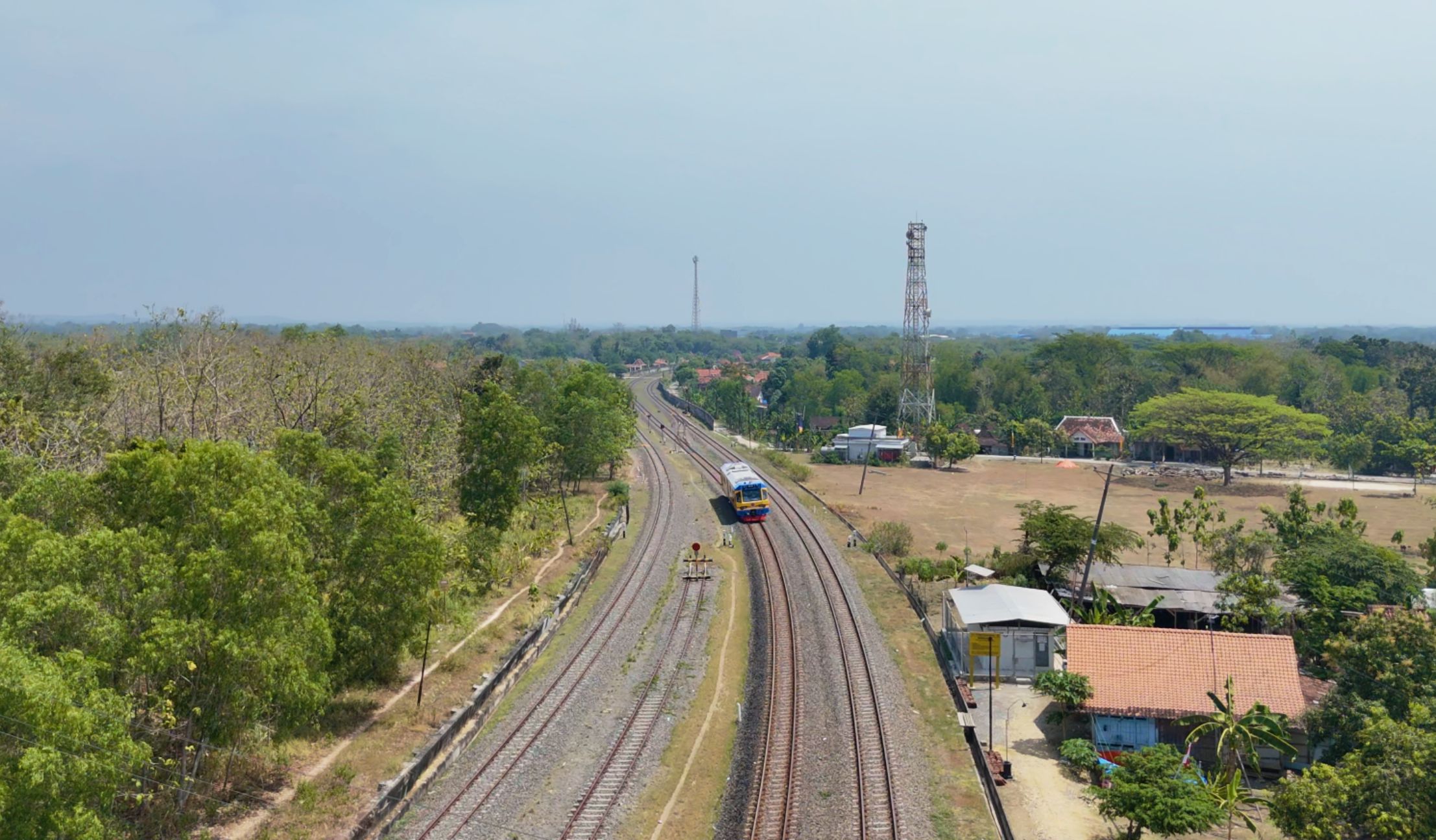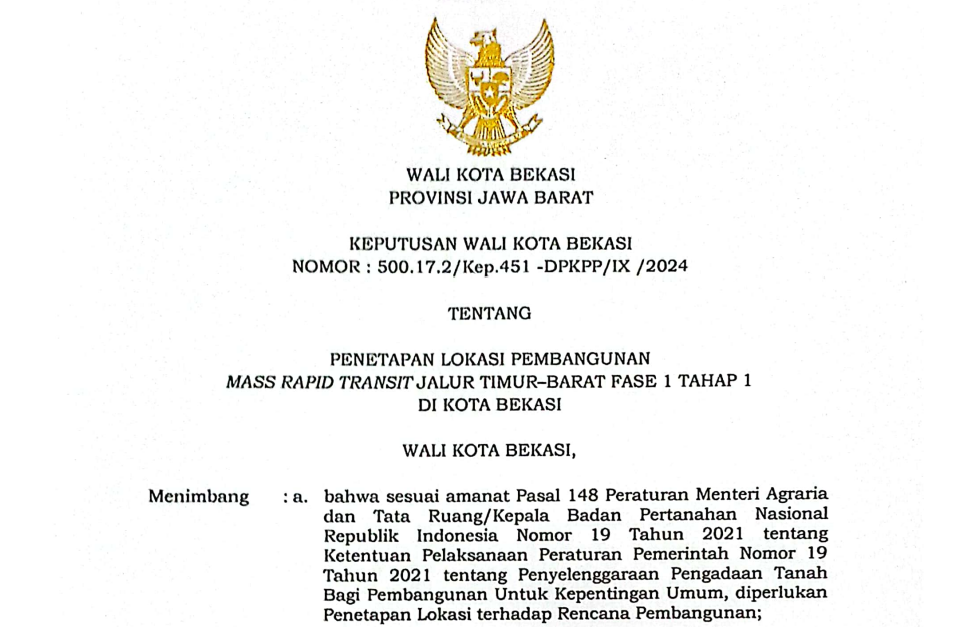MTT Railway Maintenance Center Checks Ballast on the Surakarta & Bandung Route
There are three Multi Tie Tamper (MTT) Railway Maintenance Centers operating to maintain railway lines in mid-2024.
The three are, MTT Unimat Compact 08-275/3S with facility identity number SR 3 14 06, MTT 09-16 CSM Single Sleeper with facility identity number SR 3 14 01, and MTT 09-16 CSM Single Sleeper with facility identity number SR 3 14 03. The two MTTs mentioned earlier are operated in the Bandung Regency area, while the MTT number SR 3 14 03 is deployed in the Surakarta residency area.
The operation of the MTT is the result of intense coordination between the Railway Maintenance Center and the Bandung Class I Railway Engineering Center (BTP) and the Semarang Class I Railway Engineering Center (BTP). The Head of the Railway Maintenance Center said that the Railway Maintenance Center has services for operating railway facilities, including MTTs which are used for construction of railway lines.
"The Railway Maintenance Center supports the railway track improvement program carried out by BTP (Railway Engineering Center). We support it by deploying MTTs together with their operators and technical teams to guard the MTTs while they are being worked on in the field until completion," explained Prayudi on the sidelines of the briefing agenda. with the ASP (Railway Facilities Crew) team from the Railway Maintenance Center to prepare assistance for the agenda in question.
Prayudi advised that ASP be ready to carry out assistance duties and contribute during the construction work process for upgrading the rail line. "As a certified ASP, you must be able to understand and analyze the matching calculations carried out by MTT, understand the risks and impacts when carrying out MTT operations," stressed Prayudi in front of the ASP.
Railway Infrastructure Maintenance is absolutely carried out as a guarantee of travel safety on railway public transportation services. One of them is rail track maintenance, which can be done manually, but for long stretches of track it is more optimal to do it with a Multi Tie Tamper tamping machine.
MTT functions to lift, weigh, arrange and compact the ballast under the sleepers along the railway track until it reaches the desired geometry. The MTT CSM 09-16 Single Sleeper type used for work in the Solo - Wonogiri segment has a pecking performance per one bearing with an average pecking speed of 400-700 m per hour.
ASP of the Railway Maintenance Center provided assistance during the mobilization of the MTT to operations on the Solo-Wonogiri route. MTT operations began with mobilization from the MTT stabling site at the Ngrombo Workshop on Tuesday (20/8/2024). At 13.37 WIB, to be precise, the shunting started at the Ngrombo Workshop emplacement, then approximately two hours later the MTT was launched from Ngrombo Station until it arrived at Purwosari Station at 19.13 WIB. Along the way, the MTT stops at 8 station points, to fill up with fuel and wait to pass two long-distance trains, the Banyubiru train at Sumberlawang Station and the Brantas train at Kadipiro Station. In general, the MTT mobilization ran safely and smoothly, according to the Gapeka created by PT KAI (Persero).
The operation was carried out two days later, after a joint inspection and technical briefing which was attended by the Railway Maintenance Center work team, BTP Class 1 Semarang, Prasarana Consultants and PT KAI (Persero) Daop 6 Yogyakarta.
Pecok work is planned for approximately 30 km along the Solo-Wonogiri railway segment, with a target of 2.5 km of pecok work per day. It is estimated that work will start at 14.00 WIB after the last trip of the Batara Kresna train until evening. As of this writing, ballast checking and profiling work in the Solo-Wonogiri segment is still ongoing.
Throughout the reportage observations in the field, the checking work was carried out by paying attention to Occupational Safety and Health (K3). Several times MTT carried out picketing at level crossings. At some level crossings it is necessary to involve local police officers to secure certain parameters around the location of the traffic jam. Meanwhile, there are several level crossing points that are relatively quiet, so that work parameters can be safeguarded by the team in the field.
The challenges of matching at a level crossing are relatively different from those on a straight or curved track. Because at level crossings it is necessary to carry out a fairly safe dismantling by the contractor so that the MTT can then pick, shift or lift it. Some checks at level crossings are not done just once. It can be seen that there is repetition in the field.
Meanwhile, on straight tracks, the challenge encountered is when the ballast profile does not match the force requirements resulting from optical measurements using a previous theodolite-like tool, because there is an impact on the rail bearings if forced. On the planning side, careful calculations of force requirements must be carried out, so that deviations in force values can be reduced by the realization of work in the field as a result of post-work measurements using mathematics. Because the implications of this deviation will have an impact on other material needs. So that the MTT operation work must be linear with other work parts in one unit of work to improve the railway line.
Checking work on the Solo-Wonogiri route is consistently carried out after 14.00 WIB until around midnight, with the realization of checking of approximately 2,500 MPs per day. MTT's spotting work was not hampered even though it was carried out in the afternoon. MTT is equipped with proper work light facilities. The power of the light produced is able to provide 360 degree lighting around the rail line during MTT construction.
In general, the match went smoothly, but not without problems at all. When the reporter was in the field, there were a few technical problems with the MTT, but they were minor and could be overcome quickly by the technical team who was on standby to accompany the MTT during operations. Matching work can also be continued according to the targeted plot.
MTT inspection before and after loan: Rancaekek, West Java
The improvement of railway lines in the Bandung Regency area is also carried out in a similar pattern to the Solo-Wonogiri segment. There are two MTTs used at different processing times. The first work was carried out using MTT Unimat Compact 08-275/3S which was carried out before August 2024. Meanwhile the second work used MTT 09-16 CSM Single Sleeper which was carried out at different times planned for August, November and December 2024.
In the report on the inspection results of the Railway Maintenance Center Technical Team after and before the loan of the two MTTs in early August 2024 together with BTP Class 1 Bandung, and the Directorate of Railway Facilities, MTT Unimat Compact 08-275/3S SR 3 14 06 has carried out a 6 km long check with data pecok counter with 22,211 pecok times, on the Kiaracondong-Gedebage segment and the Haurpugur-Cicalengka segment. From the results of the operation, no damage was found due to the operation, although there were minor notes but it did not affect the working function of the MTT facilities. These notes will be followed up by the technical team as soon as possible.
Apart from that, inspections were also carried out on MTT 09-16 CSM Single Sleeper SR 3 14 03, which will be borrowed by BTP Class 1 Bandung to match the existing route and the new route on the same route as the one carried out by the MTT Unimat Compact in the segment above.
On the same occasion, QR Code stickers were installed reporting the use of facilities at both MTTs. QR Code is a form of implementation of digitalization of monitoring of railway facility management which will be related to facility maintenance.
The MTT loan from the Railway Maintenance Center, apart from supporting the work of improving the railway line, also contributes to PNBP (Non-Tax State Revenue) revenues with rental rates in accordance with statutory provisions. (yogo)






.jpg)




Komentar
LOGIN FOR COMMENT Sign in with Google